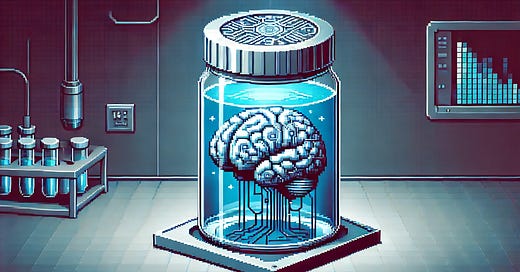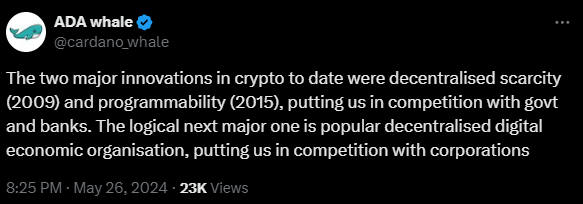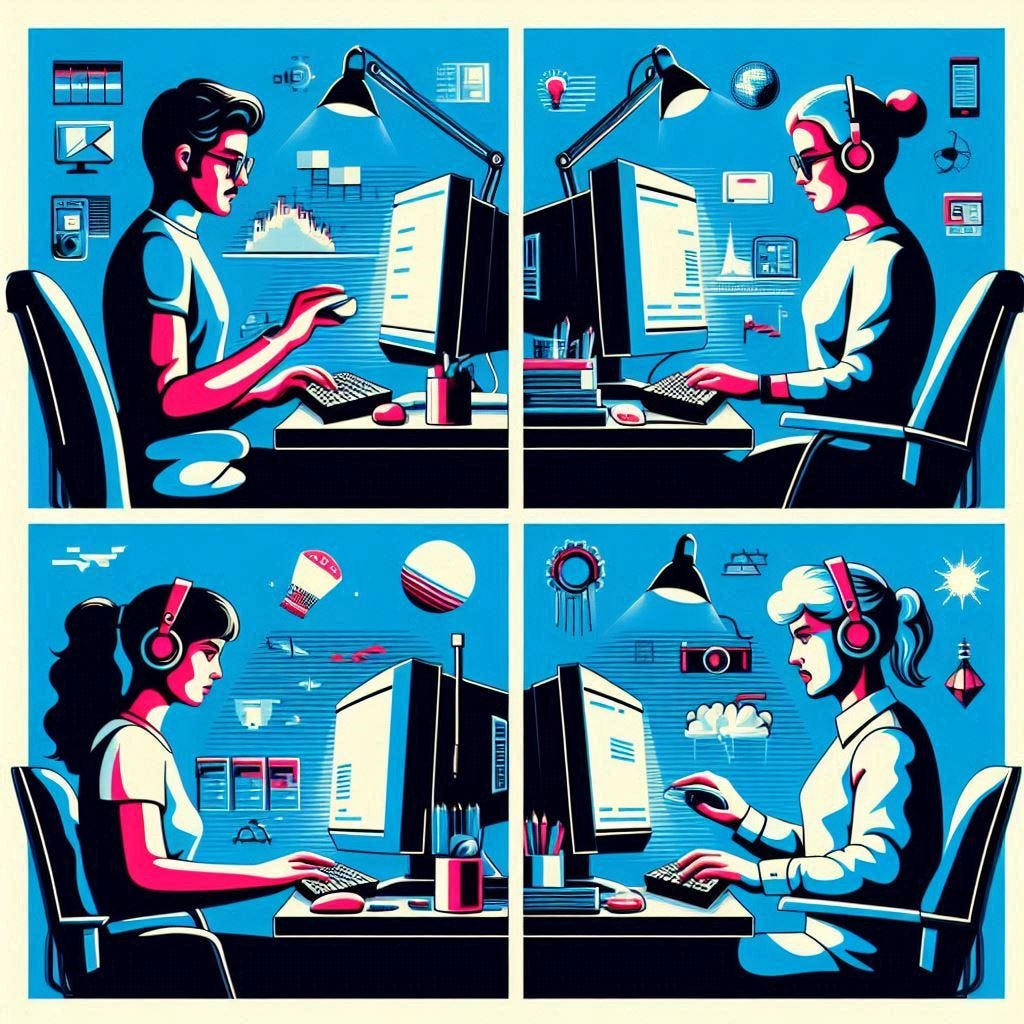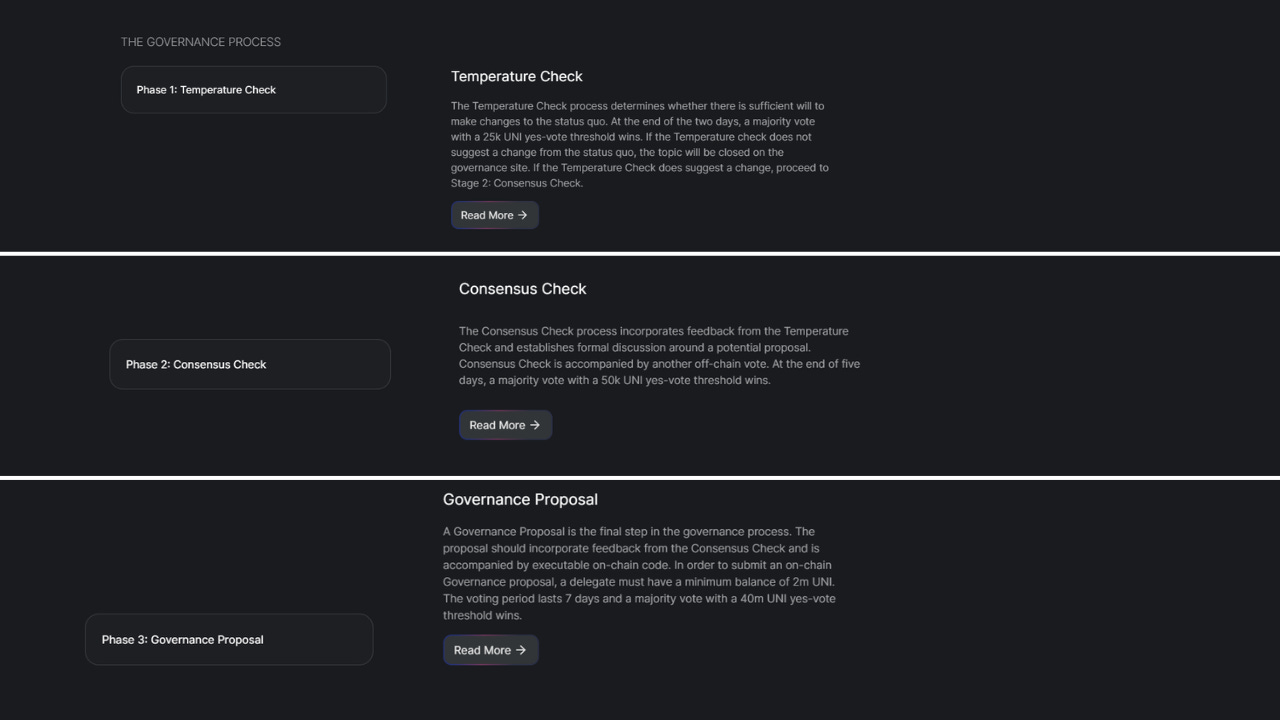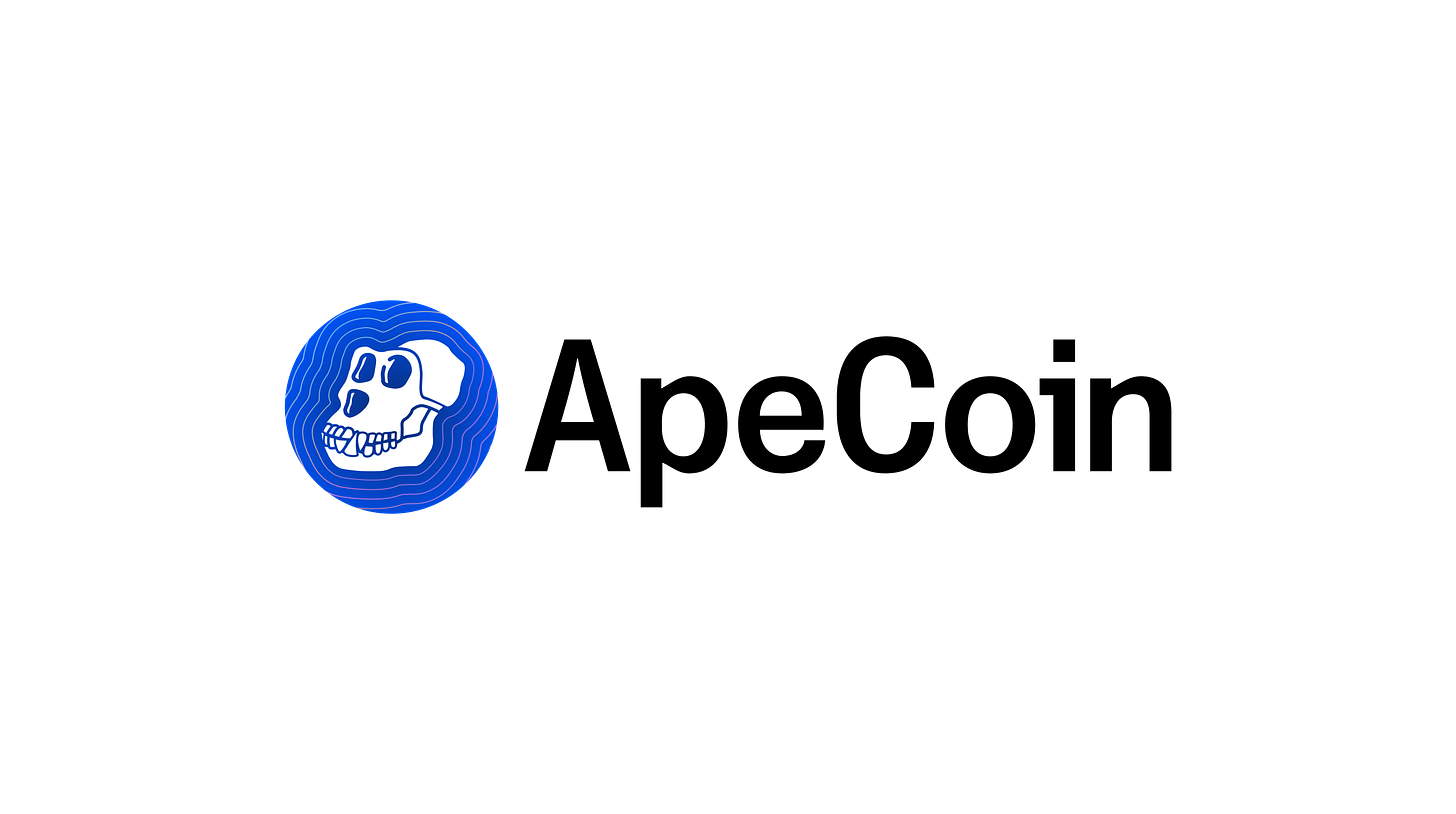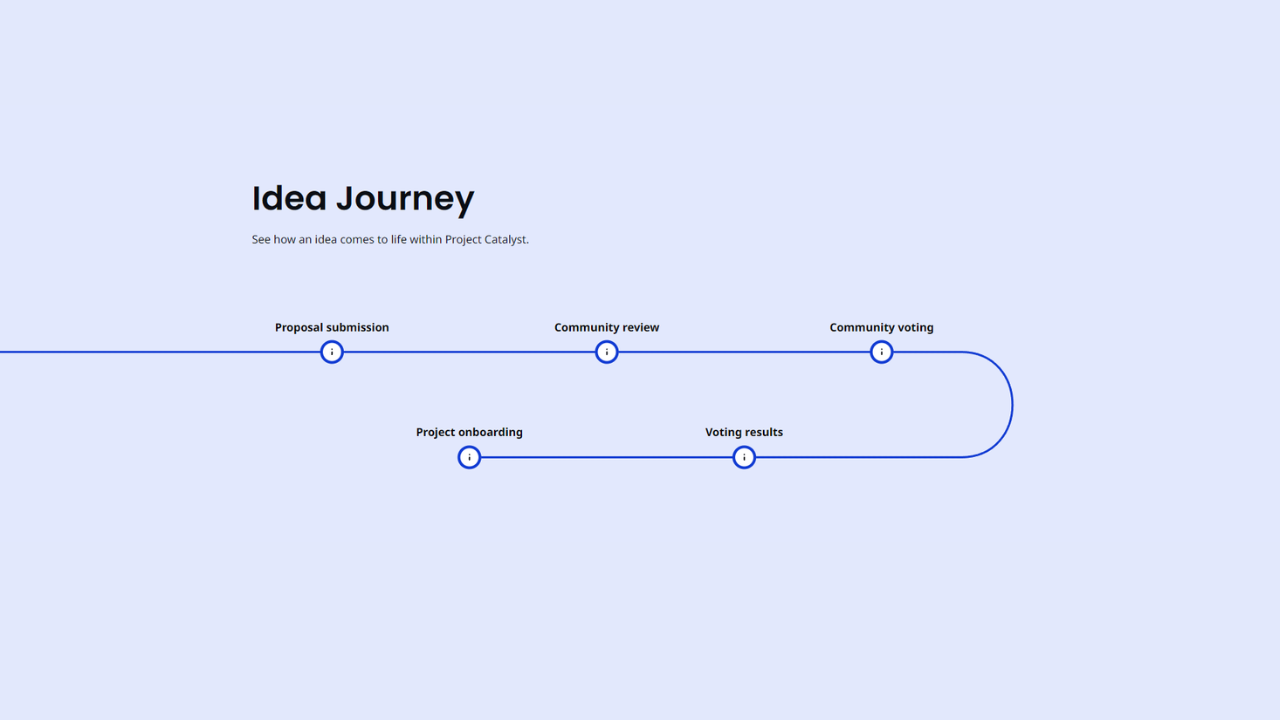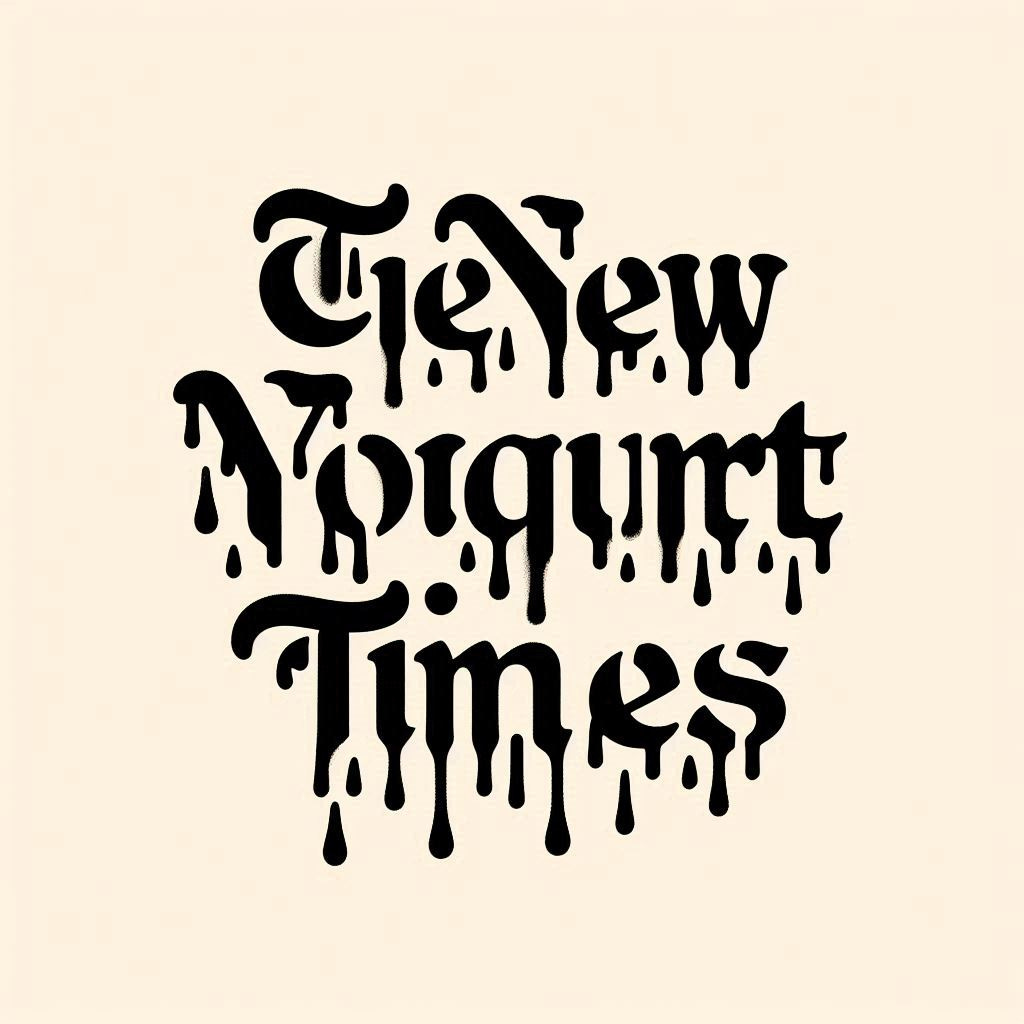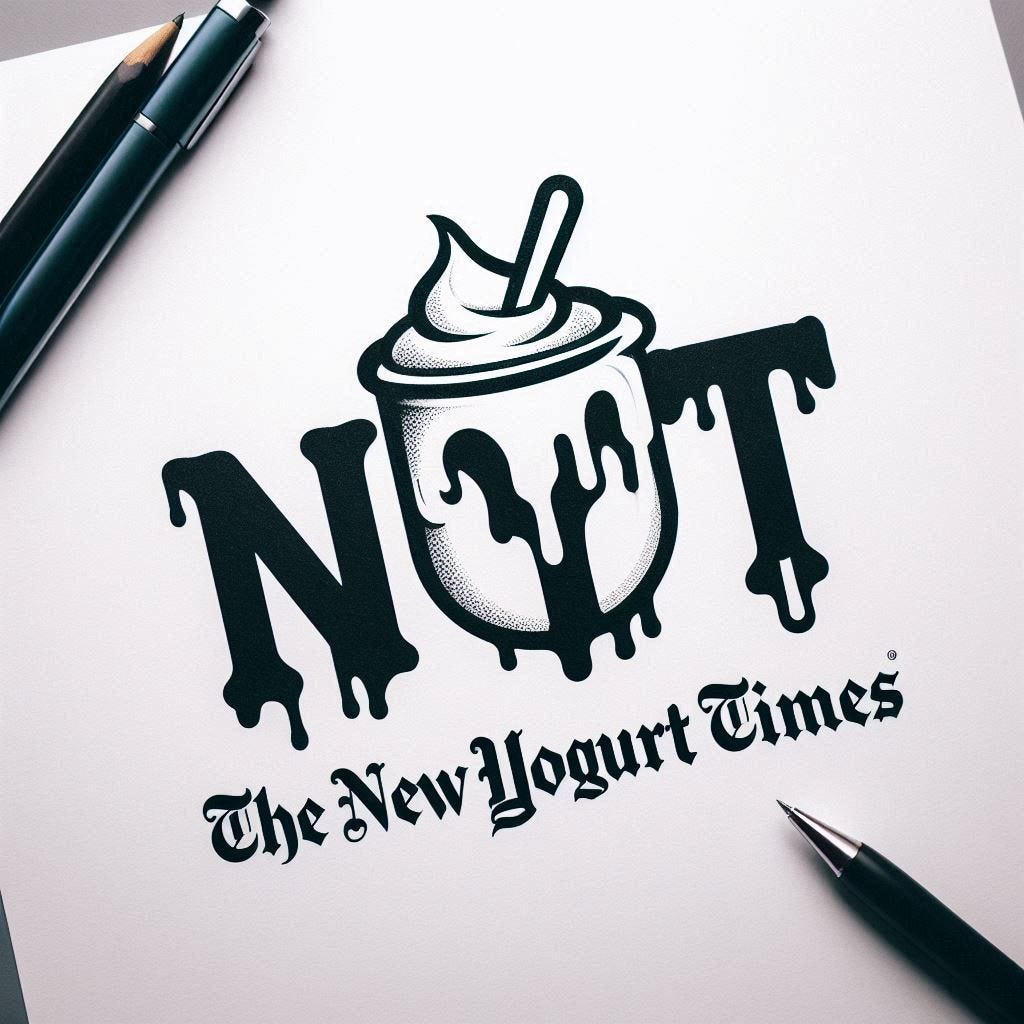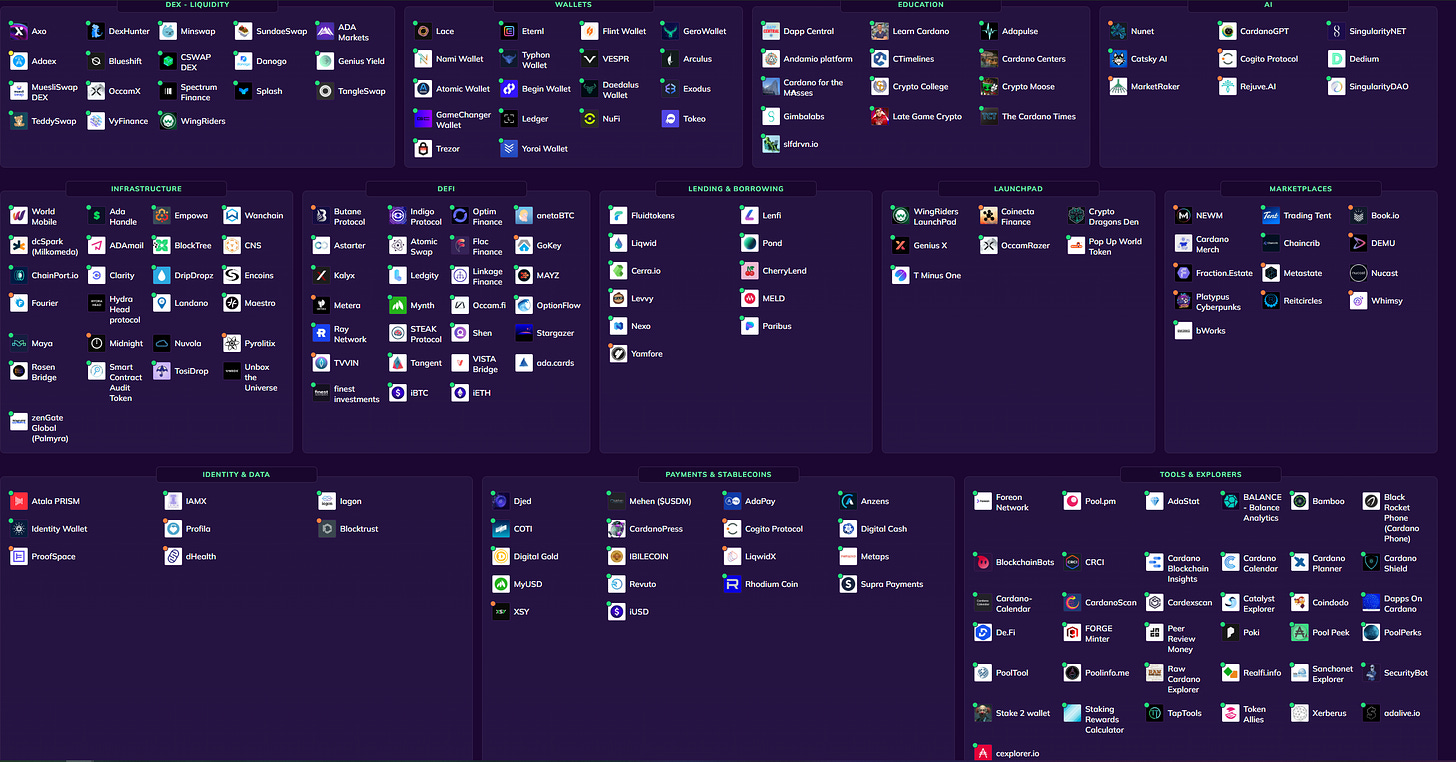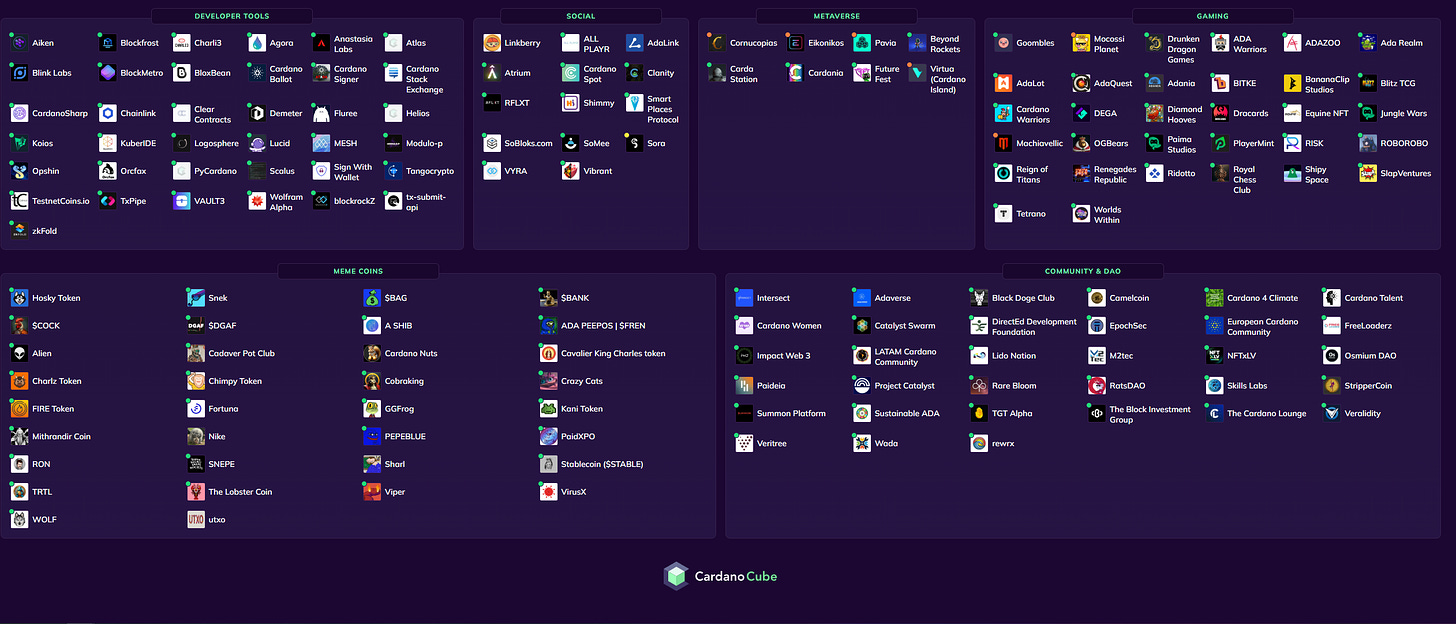Brains Out of The Jar - FL#21
How To Effectively Decentralize Day-to-Day Operations of a Business
In my last letter, I explored how AI can practically innovate the idea-to-product pipeline. Today, I walk through how businesses can effectively decentralize day-to-day operations (not DAOs), also giving AI the ability to execute an organization’s tasks.
I like to think of today's exploration as a thought session that preludes a whitepaper. Enjoy!
TLDR In This Footnote1
Shoutout to the 100 subscriber milestone any-book giveaway winner, Joseph from Venice (CA), who chose BURTYNSKY: Extraction / Abstraction (2024) as his book! Enjoy, Joseph :)
I first discovered blockchain's revolutionary ingenuity in 2021.
Since then, I've been captivated by its promise to drastically alter our digital lives.
The intricacies of the technology intrigued me, but further, the ethos2 moved me.
Its capability to enhance individual empowerment was a vision I thought necessary for a more prosperous society.
Through my research, I found that the blockchain most likely to pioneer this dream would be Cardano.
The project's goal was and is inspiring: manipulation-proof money, decentralized control, and the capability to program anything with the underlying technology.
We no longer need a government to control our money or banks to hold it for us. It also makes a new internet possible—one we can own a part of at every turn!
There is one aspect of blockchain, though, that has yet to materialize, articulated by ADA Whale in a tweet on May 26:
The underexplored yet alluring facet is the potential to transform our corporate structure. This could fundamentally change how we operate, allowing individuals to participate more fully in decision-making and resource allocation.
Unfortunately, the solutions offered have been disappointing.
To find out how we can change this, I want to think through the following question:
How can decentralized technologies help us build more effective and efficient alternatives to our current organizational structures?
By the end of this piece, I will envision how this could be architected.
To get there, I will explore:
How this is best done with traditional structures
How blockchain has changed it
What it got right and wrong
Ideate what we can do to innovate on these structures
Ideate how I would implement my idea with a new media company
This piece will focus on using decentralized technology to organize entities more akin to businesses rather than government.
While enthralling, Cardano is exploring and implementing the governmental route with the innovation of CIP-1694. It is fascinating but more akin to a nation-state-level competitor.
Subscribe to stay tuned to the nation-state-level analysis, which I will explore in depth when CIP-1694 is fully functional in production.
Business organizational structure is a massive latent utility of blockchain.
In hindsight, it may be one of the largest innovations it brings, but it is currently missing - so let's investigate how we can change this.
Traditional Structures - The Company
Modern collectives that organize people are known as companies.
Companies are made up of individuals working toward a collective goal. In the eye of the law, they share rights similar to individuals. Different company structures exist, such as LLCs and Corporations, all with varying benefits. The structure selected is typically based on the goal.
It seems that the best way we have currently ideated effective and efficient organization toward a collective aim is with a company.
It's important to consider the structure from first principles if we want to improve it with decentralized tooling.
In that sense, the following will be our working definition of a company:
A structured collection of individuals united by a common vision, operating under a defined set of principles and processes to execute tasks aimed at achieving that vision, often with the goal of generating more money than it spends.
Now, that is a loaded definition, but I think it's important first to extract the highest-resolution approximation of what companies are before trying to recreate them.
Using this definition, we can now evaluate how blockchain currently innovates the company structure.
Let’s start by looking at the primary innovative company structure derived from blockchain - a Decentralized Autonomous Organization (hereafter, DAO).
Blockchain Innovations
DAOs
A DAO is an open democratic community with operational actions executed on the blockchain with varying degrees of collaboration. They have been used for numerous purposes, all with differing levels of success.
The idea is that the central authority is removed, and the voting rights and ownership are determined based on token holdings (Further Reading). The nuances of the ownership and voting rights are written in code for the specific DAO.
For example, a DAO can define 1 vote = 50 tokens a wallet holds. While it means that the more tokens you hold, the more of a say you have, the assumption is that those with a greater financial incentive are more likely to act in good faith.
The three following examples will demonstrate real-world use cases and the framework of most DAOs.
Three Examples
Our first example is Uniswap DAO. Uniswap is the most valuable decentralized exchange and is governed by UNI token holders.
This image briefly summarizes the process.
More complexity emerges when inspecting the details. However, the image is the process in a nutshell.
This is extraordinarily remarkable, considering it's robust enough to support a $5 billion protocol!
Many NFT DAO examples exist, most famously The Bored Ape Yacht Club.
Without digressing too much, its process is similar to that of Uniswaps, looking something like the following: DAO token holder proposal -> Proposal Discussion -> Parameterized Voting -> Change Review and Implementation.
The frame of this model is relatively unchanged from DAO to DAO, but the nuanced details are usually different, such as who can actually submit a proposal and what number of tokens equals what number of votes.
My favorite implementation of a decentralized autonomous organization, although it doesn't refer to itself as such, is Cardano's Project Catalyst.
Again, the process is similar to the previously stated framework, but Project Catalyst's purpose is what makes it my favorite—it is a decentralized venture fund for the Cardano Blockchain community. It opens up the possibility for equal access to venture funding in the blockchain space!
Project Catalyst allows anyone to propose an innovative idea with the potential to get funded! The funds come from Cardano's blockchain treasury (funded by the blockchain's revenue), and all ADA holders can vote and are rewarded for doing so!
The process is as follows:
As you can see, the framework is roughly commensurate across decentralized and community-based organizations.
However, DAOs are not comparable or competitive with current company structures.
So let's examine where a DAO goes wrong and what they got right in effectively and efficiently organizing toward collective action.
Where DAOs Went Wrong
While DAOs offer an innovative and functional method of decentralizing organized groups of people, they have notable faults that raise doubts about mainstream adoption.
Slow Speed: DAOs are slow to make decisions. The lack of speed makes it impossible to compete with the day-to-day operation of centralized companies.
Centralization wearing the Decentralization Mask: Some DAO voting structures throw the label of decentralization into question. For example, if 85% of the tokens are held by 5 founders and the remaining 15% are held by 10,000 people, the power is not really with the people; it's with the founders. Five people effectively control all decisions in this scenario unless the voting protocol is any number of tokens = 1 vote.3
Laborious and Inaccessible: DAO interfaces are often not user-friendly and lack a well-defined toolset. Interacting with a DAO involves a learning curve—even for those native to crypto. For a system to hold the decentralized title, it must be accessible to those who wish to participate. If getting in the door is difficult, the DAO is about as decentralized as the nightclub that tried charging me an $800 cover at 4 a.m. on my 21st birthday.
While inadequacies exist, there is clearly a place for a DAO in the market, indicating they did get some things right that weren't previously available.
Let's explore what that is.
What DAOs Got Right
Decentralization and Reach: While some DAOs are not decentralized, the most important feat was the capability for strangers to collaborate toward an initiative. For the most part, you needed at least 1 token and a technical understanding of interfacing with a DAO, and you were able to participate.
This cannot be understated: it became possible for large amounts of pseudonymous individuals to exchange ideas and enact change toward a collective goal.
Transparency and Accountability: Voting and the change process are typically recorded on an unchanging ledger of record (read blockchain).
DAOs ushered in a new era for organizations. However, the most significant missing element is evolving the ability to decentralize day-to-day operations, radically shifting the way we work.
A decentralized autonomous organization seems reasonably equipped to make long-term decisions, particularly those that involve extended deliberation periods.
To me, they are most aptly compared to a board of directors and would function well that way: meeting quarterly to give direction and vote on suggested changes.
DAOs provide a solution to the problem of decentralization. However, they do not solve for efficiency. In a sense, they face their own trilemma.
The speed required in a competitive business landscape is not DAOble (heh) by a DAO alone.
So, the question remains: How can decentralized technologies help us build more effective and efficient alternatives to our current organizational structures?
DAOs merely provide a portion of the potential solution but do not offer an efficient alternative to our current structures as defined above.4
Opportunity for innovation is afoot, and I have a reasonable approach to the problem.
Decentralizing Organizations Day-to-Day
Imagine going to a digital goods store and buying an NFT5. The NFT has an associated role and a company—congratulations, you just officially bought your way into an organization!
That's not to say there is no interview; more on that later.
Once you hold the NFT, you will have access to all the task bounties within the organization associated with that specific role.
Every task has an estimated time to completion and indicates the amount of crypto locked into its smart contract. Once you accept a contract, you are now engaged to perform the task. Once you complete the task, the task manager reviews the work. Upon approval, the tokens locked in that smart contract are distributed to the wallet where the NFT you hold sits.
When we think about what organizations do, they're essentially very sophisticated task-allocation and task-completion machines.
We interview folks to ensure they will be a good fit; however, if someone is willing to buy their way to work for an organization, we can start a base that they may have, at least in part, a behavioral fit. If you want to interview someone, you can make this a prerequisite to access the boundaries of the organization's environment along with the NFT.
Maybe, more importantly, we can assess credentials with the wondrous innovations blockchain brings us.
The Working Dead is a project building on the Cardano blockchain that is "building a scalable, robust, and secure cross-chain educational platform solution which allows content creators to deliver and monetise their content in the form of lightweight courses and lessons using blockchain technology."
This now opens up the door for the following structure:
The founder of CompanyABC creates 5 courses on the Working Dead platform.
CompanyABC releases 10 NFTS; 2 are ManagerNFTs, and 8 are AssociateNFTs.
Only those who hold the completion certificates for all 5 courses in their wallet can buy the ManagerNFTs. AssociateNFTs require only 2-course completion certificates.
ManagerNFTs have the permission to create and complete tasks and receive 5% of revenue from CompanyABC.
AssociateNFTs have the permission to complete tasks and receive 3% of the revenue from CompanyABC.
This hypothesized structure has turned the company model on its head and created an incentive structure that allows the company to move extremely fast, attract passionate and motivated task completionists, and completely decentralize an organization's day-to-day operations.
This can extend to the behavioral fit. We can programmatically require that specific book series, games, movies, TV series, and/or JPG community NFTs be included in the wallet. It may not be the route you take when structuring a decentralized company, but it may be a good way to preempt a base cultural fit in who owns the NFT.
How would I implement this if I did something like this for Frontier Media?
I'll use this next section to ideate that.
The New Yogurt Times - Decentralized Media Operations
I would create a different newsletter within Frontier Media to experiment with this possibility.
Let's call it The New Yogurt Times (NYT for short).
I would first work with the Working Dead on their work.courses website to create a series of courses:
Introduce the company, vision, mission, values
Our specific processes and workflows
Purpose and content type and aim at NYT
A domain-specific course (writing, editing, fact-checking)
I would start by minting 3 NFTs. One, a writer, one an editor, and one a fact checker.
Each NFT would get an equal distribution of 10% of the revenue generated from the NYT.
The tricky part would be deriving access rights and permissions from the NFT top web2-based solutions.
We are getting quite close to being able to manage this on Web3-based solutions (with Cardano products that I'm aware of).
The tasks can be moderated from Discord, which has NFT permission-based capabilities.
I suppose you may eventually be able to work with Iagon to provide specific read-only or edit access rights to folders within a folder structure on their decentralized storage program, allowing access rights to be more well-defined.
This is actually quite nice because a writer's tasks can be as simple as writing a draft of a piece and placing it in the folder.
The editor can go to that folder and provide comments, edits, and updates.
And the fact checker can ensure that the accuracy is 100%.
Unfortunately, I'm not aware of any current way to manage a direct relationship with an NFT to an account on Substack to post the newsletter (which is the platform where the NYT would be published).
While this is where a disconnect occurs, the account admin (myself) would just need the thumbs-up in Discord after all parties have completed their tasks, and I would schedule the post.
And there it is - a decentralized task-based organization.
To ensure revenue is evenly split, there would be a transparency reporting requirement so that the money made from that specific Substack offers payouts to the employees.
Eventually, though, all of the access-rights requirements can be programmatically embedded in the NFT, opening up access to the required aspect of the tech stack for that role.
Revolutionizing Work and Bringing AI Into the Workforce
Whether I'm actually creating the New Yogurt Times is beside the point; the ideation remains illuminating.
We DO currently possess the tools and capabilities to decentralize an organization's operations. This is a deeply underrecognized and underexplored area of blockchain that needs to start seeing the light of day.
This is mesmerizing to me.
I have always felt that our current '9-5' paradigm is outdated and has run its course. It serves the purpose of providing stability, but why not stability and flexibility? In this structure, it's reasonable to believe that you can work with a team, deliver high-quality work, and take time off as long as time-bound tasks have been completed! If you want to generate more money, you can go and complete tasks at another organization.
We can also see that this structure can be complimented with a DAO.
DAOs work on slow, strategic, and long-term decisions.
A governance token could be released for NYT with structures similar to the examples given so that the DAO holders can make long-term strategic decisions.
I recalled my AI piece from last week and noted AI agents at the onset of this piece. The system ideated today allows AI agents to function in our organizations so long as they can access a crypto wallet.
The fact that AI is not well integrated into our current business processes is often discussed in the AI content space. Here’s a quote (bolding is my doing) from Ethan Mollick just last week: “But doing nothing has a number of issues. First, it ignores the very real fact that we do not need any further advances in AI technology to see years of future disruption. Right now, AI systems are not well-integrated into businesses and organizations, something that will continue to improve even if LLM technology stops developing.”
Well, everyone, today I laid out a potential answer.
I may give this idea more thought in the future, further refine my thoughts, and, should I be gripped by it, attempt to write a whitepaper to uncover its merits.
I hope you enjoyed this one!
Beginning the effort of ideating solutions to problems, as I did here, is challenging yet meaningful. Please let me know if these are worthwhile for you—they take a considerably longer amount of time but can potentially bring an important product to life.
I hope you enjoyed it. If you did, please like, share, and subscribe.
What industries can you see this idea being successfully applied to? How about unsuccessfully? Curious to get your thoughts on this.
As stated, I may further refine these ideas here, so subscribe to stay engaged with the conversation and, hopefully, one day see a successful NYT 😉
Have a wonderful week, everyone.
See ya in the next one!
Dom
TLDR; The piece offers a groundbreaking decentralized approach to coordinating day-to-day business operations, transcending both traditional hierarchies and current DAOs. By leveraging blockchain, we can create a system where tasks, rewards, and collaboration are available for any pseudonymous human or AI agent to participate in an organization based on a predefined set of requirements to be held in a crypto wallet, such as certificates, course completion, etc. This model promises to redefine work dynamics, potentially offering unprecedented flexibility and efficiency in the digital age.
The Ethos goes something like this - The individual should be the sovereign unit of society, not the state.
A primary reason this system is typically not implemented is because Ntokens = 1 vote can become a significant attack vector. All it takes is one nefarious party to spin up 10,000 wallets, with 1 token each, and vote for the system's demise. This is why most DAOs opt for a solution of X tokens = X votes.
Our first-principled definition from above: A structured collection of individuals united by a common vision, operating under a defined set of principles and processes to execute tasks aimed at achieving that vision, often with the goal of generating more money than it spends.
For those unfamiliar, an NFT is a unique identification only one person can hold. Forget the Art NFTs for a second; it can be any data type. That NFT has a unique identifier on the blockchain that only 1 person can hold. Even if 30 NFTs are the same picture, all 30 have unique identifiers.


